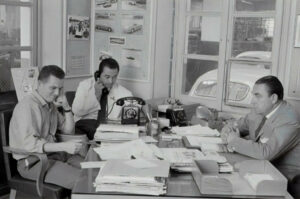In the world of medicine, myths and misconceptions often intertwine with the facts. In this comprehensive exploration, we will delve into two intriguing medical myths – the belief in shocking a flatlined heart and the notion of injecting medication directly into the heart. These myths have thrived in the realm of fiction and film but don’t hold up to medical scrutiny. We aim to separate fact from fiction, providing readers with an in-depth understanding of the fascinating truths behind these medical legends.
Many of us have witnessed it countless times in movies and TV shows: a frantic medical scene where someone’s heart rate flatlines on the monitor. In a dramatic twist, medical professionals rush in, shouting for the defibrillator paddles, and with a dramatic jolt of electricity, the heart miraculously springs back to life. It’s a moment of high tension and suspense.
In the real world of medicine, a flatline on a cardiac monitor signifies a state of asystole – a condition where the heart ceases to contract. While it may seem intuitive to shock the heart to induce contractions, it doesn’t work as portrayed in fiction. The key to understanding why lies in the heart’s electrical system and the role of electrolytes.
The heart’s rhythm is controlled by the Sinoatrial (SA) node, a cluster of specialized cells that generate electrical signals. These signals prompt the heart muscle to contract, creating the heartbeat. This intricate process relies on the precise balance of electrolytes – sodium, potassium, and calcium.
Sodium and calcium are typically found outside of cells, while potassium resides within. When the heart’s electrical potential reaches a certain threshold, voltage-regulated calcium channels open, allowing sodium and calcium to enter the cells, triggering depolarization, and causing the heart to contract.
However, the impulse doesn’t stop there. It moves through a series of specialized nodes and fibers, ensuring the coordinated contraction of different parts of the heart. Shocking a flatlined heart won’t achieve this synchronized effect because it doesn’t address the underlying issue – disrupted electrolyte balance.
To grasp why external shocks can’t revive a flatlined heart, we must delve into the role of electrolytes in the heart’s function. Sodium, potassium, and calcium are essential electrolytes that the SA node uses to generate an electrical differential.
When blood pressure is elevated, sodium is driven into your cells. This influx of sodium generates an electrical potential. Simultaneously, potassium is expelled from the cell, contributing to the potential. When the potential reaches a sufficiently high level, voltage-regulated calcium channels open, allowing both sodium and calcium to flood the cell. It is at this point that depolarization occurs, leading to the heart’s contraction.
This coordinated dance of electrolytes and electrical impulses ensures that your heart beats rhythmically and effectively, pumping blood throughout your body.
Now that we understand the heart’s intricate electrical system and the importance of electrolytes, it becomes clear why external shocks cannot revive a flatlined heart. The absence of electrical activity in asystole means that the heart’s electrical system has come to a halt.
Shocking a flatlined heart won’t reignite the SA node or restore the delicate balance of electrolytes. Instead, it’s akin to trying to jump-start a car with a dead battery – the missing components essential for function must first be addressed.
In summary, the portrayal of shocking a flatlined heart in movies and TV shows may be riveting, but it doesn’t align with the realities of medicine. The heart’s electrical system and the critical role of electrolytes make it impossible for external shocks to revive a heart in asystole. To truly understand the complexities of the heart’s function, one must look beyond the dramatic scenes of fiction.
In dramatic scenes of medical emergencies, you may have seen characters dramatically stab a needle into a person’s heart, seemingly curing them instantly. While it makes for compelling storytelling, the reality is quite different.
The act of puncturing the heart with a needle, as often depicted in dramatic medical scenarios, is a dangerous and deadly one. It leads to rapid blood loss and air entering the heart – a far cry from a miraculous cure. Thankfully, medicine offers safer and more effective alternatives for delivering medication to the heart.
Alternative Methods for Medication Delivery
In the world of medicine, there are two widely accepted methods for delivering medication to the heart, both of which are considerably safer than direct heart puncture.
Intravenous (IV) Administration: One of the most common methods involves inserting a needle into a vein and establishing an intravenous line. This approach allows medications to enter the bloodstream directly and reach the heart quickly. The average person’s blood volume circulates throughout the body in approximately one minute, depending on factors like heart rate and left ventricular ejection percentage. IV administration ensures swift delivery of medications to the heart.
Intramuscular Injection: When intravenous administration isn’t feasible, medications can be injected into muscle tissue. Even with this method, medications can reach the heart in less than five minutes due to the body’s efficient circulation.
These established and safe methods of medication delivery eliminate the need for inserting a needle directly into the heart, a procedure fraught with danger.
Dispelling Hollywood Myths
Hollywood has perpetuated the notion of injecting medication directly into the heart, often in high-stakes scenes where seconds count. For instance, in “Pulp Fiction,” John Travolta’s character administers “adrenaline” to Uma Thurman’s character by stabbing a needle into her heart to counteract a supposed heroin overdose.
However, the medical reality is different. The medication used in such scenarios is usually epinephrine, not adrenaline. Epinephrine, commonly known as adrenaline, treats conditions like low blood pressure, asthma attacks, allergic reactions, and cardiac arrest. While it influences the sympathetic nervous system, often referred to as the “fight or flight” response, it’s rarely administered for heroin overdoses. In cases of opioid overdose, respiratory depression is a primary concern, and administering epinephrine doesn’t address this issue.
A more suitable medication for opioid overdose is naloxone, an opioid antagonist. Administering naloxone blocks opioid receptors, effectively reversing the effects of opioids. This rapid and permanent effect can transform a comatose, non-breathing individual into a fully alert and sober state within minutes.
In conclusion, while Hollywood may take creative liberties with medical procedures for dramatic effect, it’s essential to separate fact from fiction. Medical myths can perpetuate misconceptions, so understanding the realities of these procedures is crucial for informed and accurate storytelling. In the real world of medicine, shocking a flatlined heart and injecting medication directly into the heart are far from the heroic solutions depicted on the silver screen.

Since its incorporation into Los Angeles in 1910, Hollywood has played an instrumental role in…

The Academy Awards, commonly known as the Oscars, are among the most prestigious honors in…

Imagine yourself transported to ancient times, where profound questions about existence loomed large. How did…

Among the most intriguing cocktails is the Sourtoe Cocktail, a concoction that’s less about the…
